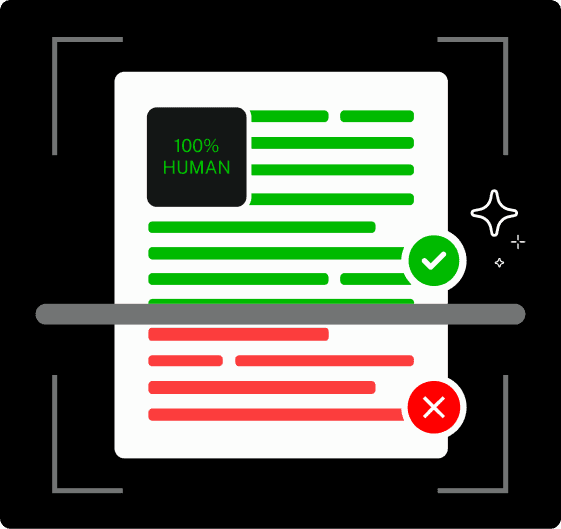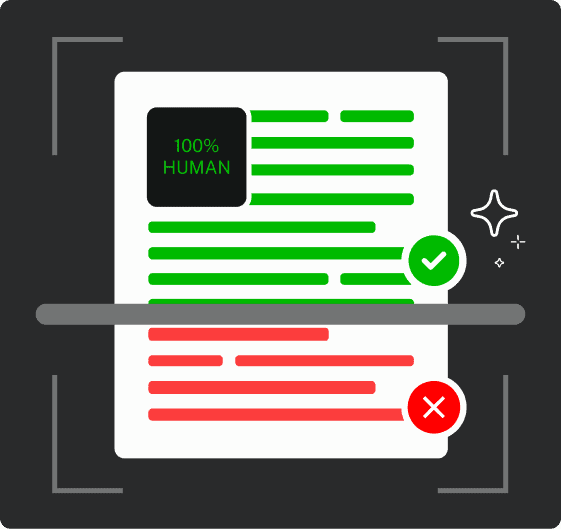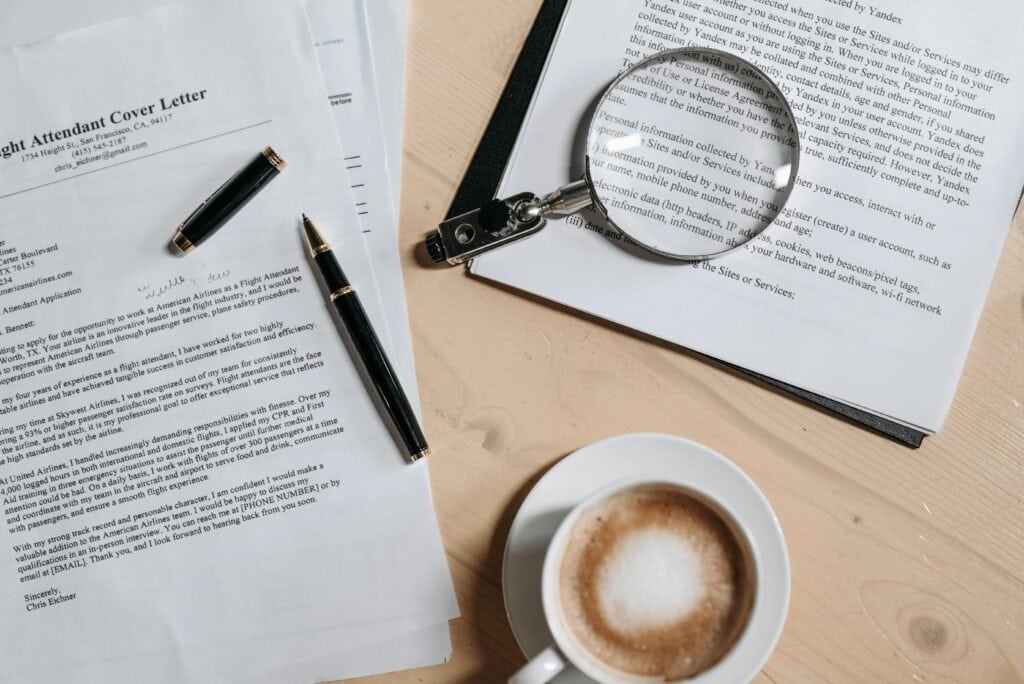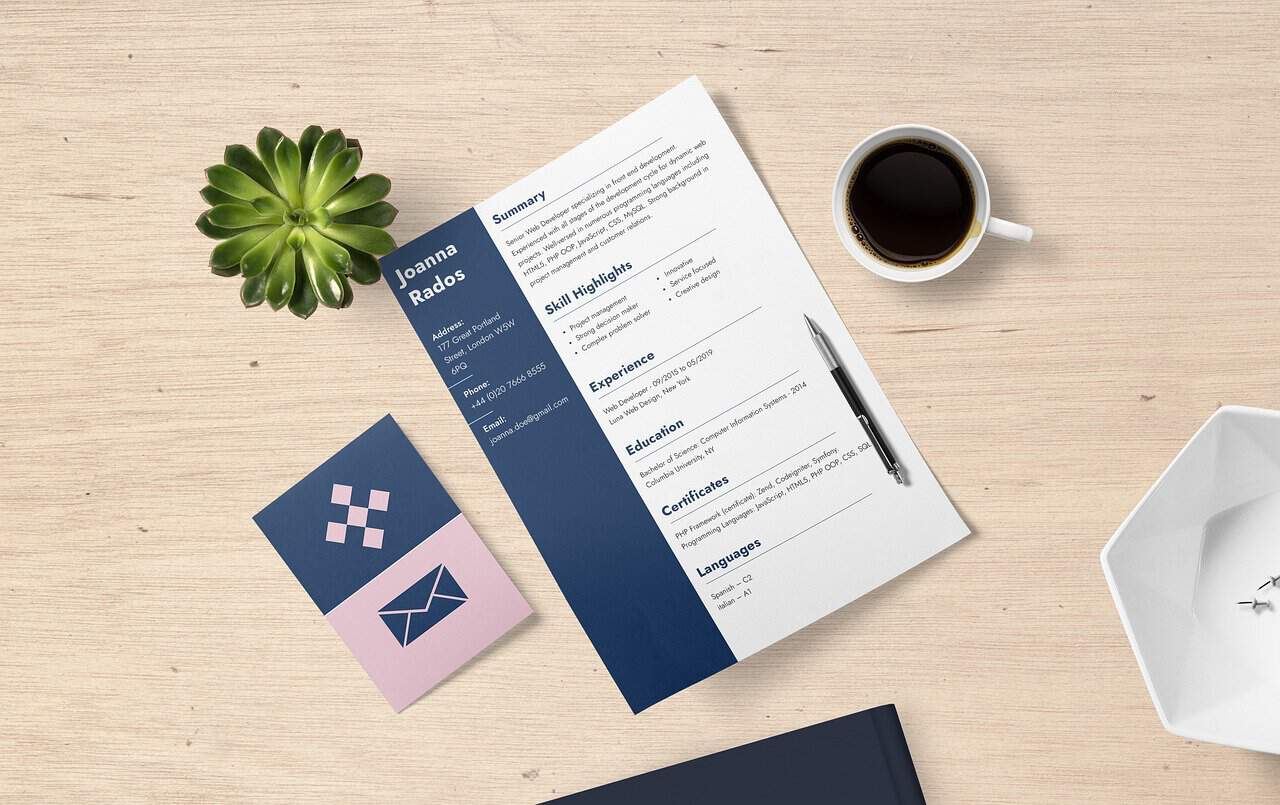Your resume is a fact sheet that lists your experience, skills, and achievements in a structured format.
The cover letter, on the other hand, is a persuasive pitch, the story that sells why you’re the best person for the role you’re interested in.
Knowing when to send just a resume and when to pair it with a cover letter makes a huge difference in how your application is received.
So when should you use each? And more importantly, how can you make sure both work together to maximize your chances of getting hired?
In this guide, I’ll break down what is a cover letter vs resume and the key differences between the two.
What Is a Resume?
A resume is a personal pitch to an employer that tells them why you’re the right fit for the job before they ever meet you.
Many people mistakenly think a resume’s job is to get them hired. It’s not!
A resume’s purpose is to get you an interview.


Never Worry About AI Detecting Your Texts Again. Undetectable AI Can Help You:
- Make your AI assisted writing appear human-like.
- Bypass all major AI detection tools with just one click.
- Use AI safely and confidently in school and work.
Hiring managers don’t pick candidates based on resumes alone, they use them to decide who’s worth talking to.
What Information a Resume Should Include?
Every resume should have the following components:
- Your full name, phone number, professional email address, and an optimized LinkedIn profile
- Your work experience in reverse chronological order with quantifiable results
- Relevant degrees with institutions and graduation years
- Technical skills and industry-specific competencies
- Publications and research (if any)
- Volunteer work
What Is a Cover Letter?

The cover letter is a bridge between your resume and the job description.
It allows you to speak directly to the employer beyond the facts already listed in your resume.
In your cover letter, you describe your intent behind the accomplishments you have and in what ways they made you a good fit for the industry.
What Information a Cover Letter Should Include?
A strong cover letter follows a simple structure that includes:
- A personalized greeting
- A compelling opening where you state your interest in the role and briefly highlight your most relevant strength
- A description of how your experience connects to the company’s need
- Why you want THIS job (not just any job)
- A closing with a call to action expressing interest in further discussion
How a Cover Letter Complements Your Resume
Resumes are factual and structured. They don’t leave much room for showing passion or individuality.
However, a well-written cover letter allows you to speak directly to the hiring manager in a way that feels personal.
While a resume gives an employer the “what” of your experience, a cover letter explains the “why.”
Why you’re interested in the role, why you’re a great fit, and why they should interview you.
If you’ve taken time off work or moved from one career path to another, your resume alone will leave hiring managers with questions.
But you can explain how you intentionally made such moves with specific reasons in your cover letter.
Cover Letter vs Resume: Key Differences
Many job seekers make the mistake of treating cover letter vs resume as interchangeable although they have very different purposes.
Here are the key differences between the two:
1. Purpose and Function
The first thing you need to know is what is the purpose of a cover letter vs a resume.
The goal of a resume is to provide quick, scannable insights into your work experience, education, and key skills.
While a resume is largely objective, a cover letter allows you to personalize your application and make an emotional connection with the hiring manager.
Your resume gets you the attention of hiring managers, but your cover letter convinces them to call you.
2. Length and Format
A resume is short, structured, and highly formatted. It is one page long for early-career professionals and two pages for those with extensive experience.
Resumes are broken down into clear sections that include work experience, education, skills, certifications, etc., formatted with bullet points for easy scanning.
Hiring managers spend an average of 6–7 seconds reviewing a resume.
A cover letter, however, is a one-page narrative, three to four paragraphs long.
Instead of a rigid format with bullet points, it’s written in full sentences with a logical flow that follows a professional letter format.
3. Customization and Personalization
The biggest difference between a resume vs cover letter is customization.
A resume is relatively static. You tweak it slightly for different roles, but the core information largely remains the same.
A cover letter, on the other hand, should always be customized. It’s not a document you copy and paste for every job.
Instead, it should be tailored to:
- The specific company and its mission
- The specific role and its responsibilities
- How your experience and skills directly apply to the job
4. Tone and Writing Style
The tone of a resume is formal and to the point.
There’s no room for storytelling or emotion but hard facts and quantifiable achievements.
You keep it short, sharp, and free of unnecessary words.
But in your cover letter you get to sound like a real person. Its tone is professional but conversational, not robotic, but also not overly casual.
It should sound like you talking to the hiring manager, showing enthusiasm and confidence without being overly formal.
5. Content and Structure
A resume is broken into sections, each of which serves a clear function.
- Contact information
- Professional summary
- Work experience in reverse chronological order
- Education
- Skills and certifications
Each section is factual, with hard evidence of your qualifications.
Cover letters follow a more fluid structure, which generally includes:
- An opening paragraph with a strong hook and your interest in the role
- Middle paragraph(s) to one or two key experiences that make you a great fit and linking them directly to the job description
- A section on why you are genuinely excited about this specific opportunity
- Closing paragraph to express interest in an interview
When to Use a Cover Letter vs a Resume
While a resume is non-negotiable for almost every job application, a cover letter isn’t always required.
Let’s discuss the circumstances in which you need just a resume and those in which you need a cover letter plus a resume.
When You Only Need a Resume
There are situations where a cover letter isn’t necessary, and sending one could actually be a waste of time.
Here are a few cases where a resume alone will do the job:
- The job listing explicitly says “No cover letter needed.” If an employer specifically states they don’t want a cover letter, respect their instructions.
- You’re applying through an online portal with no option for a cover letter. Some application systems don’t even allow you to upload one.
- It’s a high-volume, entry-level job where hiring managers are processing hundreds (or thousands) of applications, like retail, warehouse work, or customer service and they don’t have time to review cover letters.
- You’re handing in your resume at a job fair or networking event. When meeting recruiters in person, they often just want a resume for quick reference. Your real “cover letter” in this case, is the conversation you have with them.
When You Must Include a Cover Letter
There are certain situations where if you skip a cover letter, you give up your best chance to stand out.
Here’s when a cover letter is a must:
- The job posting asks for one: This is the most obvious reason. If a company requests a cover letter and you don’t include one, you look careless or disinterested in the role. Employers automatically reject applications without a cover letter when it’s requested.
- You’re changing careers or industries: If your experience doesn’t perfectly match the job on paper, your cover letter is where you explain how your transferable skills make you a strong candidate
- You have an employment gap: If you’ve been out of work for a significant period, you need a cover letter to proactively address the gap and reassure the recruiter that you’re ready to contribute.
How to Make Your Resume and Cover Letter Work Together
A resume and cover letter are not separate, standalone documents. Your cover letter should always reinforce and complement your resume, not just summarize it.
If, for example, your resume states that you “increased sales by 30% through a marketing strategy,” your cover letter should expand on that by explaining how you identified the opportunity, implemented the strategy, and drove measurable impact.
Additionally, both documents should maintain a consistent tone and formatting to present a unified personal brand.
If your resume is sleek and data-driven, your cover letter should match the same energy.
Aligning keywords with the job description across both documents also increases the chances of passing Applicant Tracking Systems (ATS) and catching the recruiter’s attention.
How to Optimize Your Resume and Cover Letter for Job Applications
Here’s how to optimize your resume and cover letter to increase your chances of landing interviews and getting hired faster.
Build a Winning Resume in Minutes
Many recruiters use applicant tracking systems (ATS) to scan through hundreds of applications and filter out candidates before a human ever sees their resume.
So, you need an application that is not only well-crafted but also optimized for both AI screening and human review.
You can use Undetectable AI’s Resume Builder to create a professional, high-impact resume in minutes.
The tool allows you to upload your existing resume or sync your LinkedIn profile to extract relevant experience and skills.
There’s a selection of well-designed cover letter vs resume examples and templates you can choose from.
The AI Humanizer feature also refines the language so that your resume reads naturally and persuasively while remaining indistinguishable from the human-written text.
Write a Cover Letter That Stands Out
Many applicants struggle with writing a cover letter that feels personalized and compelling.
When using an AI tool like Undetectable AI’s Cover Letter Generator, you no longer have to struggle with structuring or wording your letter.
You can just feed it the job description and your major experiences, and it will expand on them purposefully without rehashing your resume.
Since many employers now use AI to scan cover letters for relevance, having a tool that optimizes keywords and ensures a natural flow of language will also give you a serious advantage.
And to make sure your final draft feels truly human, you can easily test both our AI Detector and Humanizer in the widget below!
Apply Faster with Tailored Resumes & Cover Letters
Even with a strong resume and cover letter, the job application process requires applicants to search for roles and tailor each submission.
You can also apply to jobs faster without compromising quality with AI automation.
Undetectable AI Job Application Bot system connects your LinkedIn profile and customizes job search filters to ensure that AI identifies the best-matching roles for your experience.
Instead of blindly applying to hundreds of roles, the system filters jobs and matches you with opportunities that align with your career goals.
Once the AI finds the best job matches, it automatically customizes your resume and cover letter for each application.
Conclusion
Now that we are clear on the differences between a cover letter vs resume, ask yourself: Is my resume strong enough on its own, or could a cover letter give me a competitive edge?
If there’s even a slight chance it could, don’t leave it out in your next application.
And if you’re struggling to search for relevant opportunities and keep track of your job applications, try using our Resume Builder and AI Job Application Tool.
The combination of well-formatted resumes and personalized cover letter with the speed of AI in hunting down relevant opportunities will get you interviews like crazy.
Sign up for Undetectable AI today.
